In the afternoon and evening of September 7, dozens of fires ravaged the city of Detroit, destroying or damaging nearly 100 buildings.
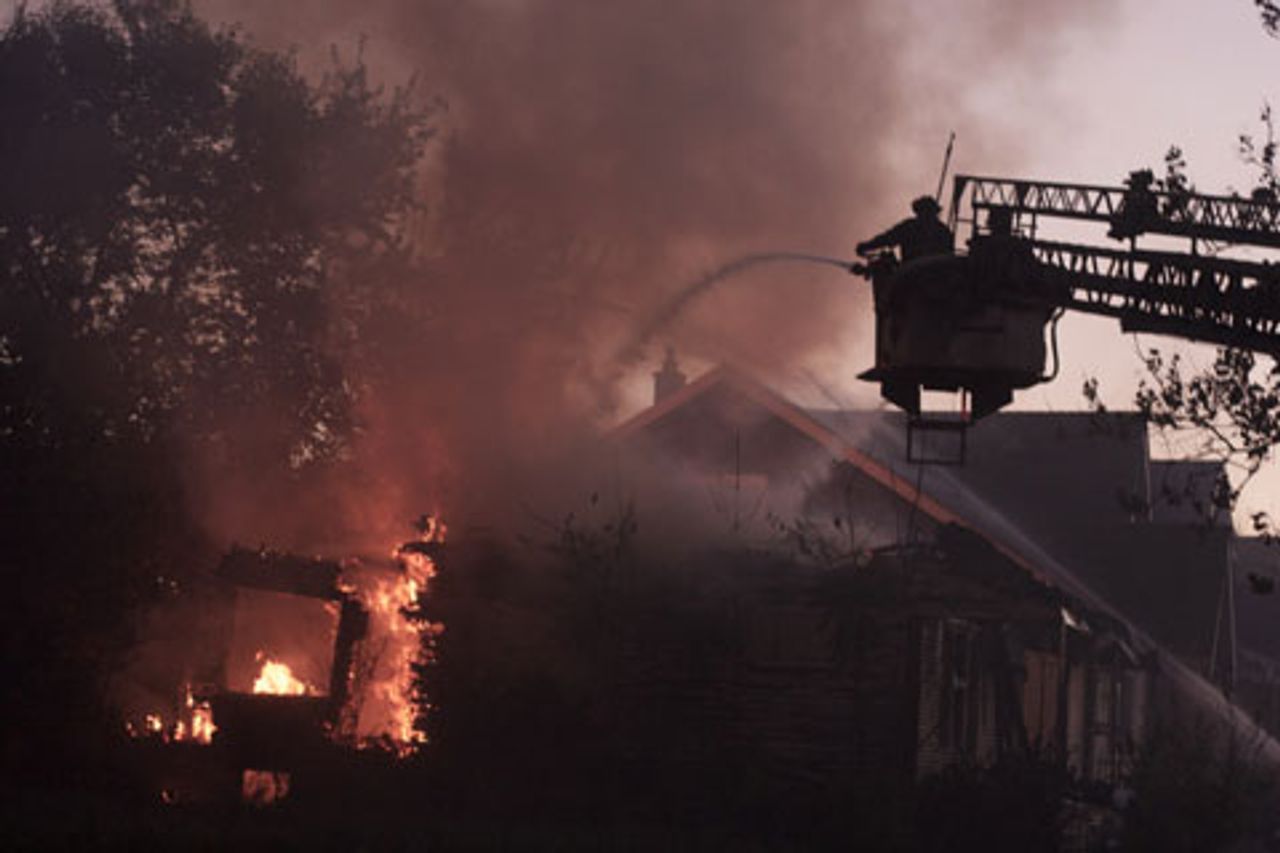 This scene on Robinwood Street was repeated throughout Detroit on the evening of September 7
This scene on Robinwood Street was repeated throughout Detroit on the evening of September 7The city’s worst fire emergency in decades was largely caused by the collapse of hundreds of power lines. Due to under-staffing in the Detroit Fire Department (DFD), many of these downed lines were left unattended. Over the ensuing four hours, fierce winds and dry conditions spread the fires, destroying or damaging at least 85 structures.
Ten of the fires have been classified as large, multi-building fires. An unknown number of people—at least 40—have been made homeless. According to city officials, 29 of the damaged structures were occupied. Four fires caused damage to substantial portions of city blocks.
A review of the events leading up to the fires reveals that they were not a mere “natural disaster,” as Detroit Mayor Dave Bing declared, but the predictable result of energy giant DTE’s neglect of the power grid and the city’s cutbacks to fire protection.
None of the conditions that led to the disaster have been addressed. Far from it. DTE and the Democratic Party-dominated city government have seized on the destruction to further their plans for depopulating entire sections of the city and criminalizing residents as “energy thieves.”
The lead-up to the fire
The disaster was triggered by winds that reached nearly 50 miles per hour. But contrary to Bing’s assertions, dry and windy conditions are not abnormal in the late summer and early autumn. The weather conditions merely exposed the advanced state of decay in the power grid and its upkeep.
In all, at least 750 power lines went down across metropolitan Detroit. In many places the lines fell when trees collapsed on them. In other places, broken lines and blown up transformers made contact with shrubs, trees, and buildings in the immediate vicinity.
DTE, which has a legal monopoly over power distribution in Detroit, has in recent years neglected the electricity infrastructure, laid off linemen and cut back on funding for tree trimming. DTE likewise finds insufficient profit in burying power lines—now standard procedure for newer and more affluent areas.
Numerous residents testified that they called to complain to DTE in the days and hours before the fires about energy surges, tree limbs too close to lines, and other dangerous conditions. Such complaints in Detroit are routine—and they are just as routinely ignored by DTE. The difference this time was that many of those who complained very soon afterwards lost their homes.
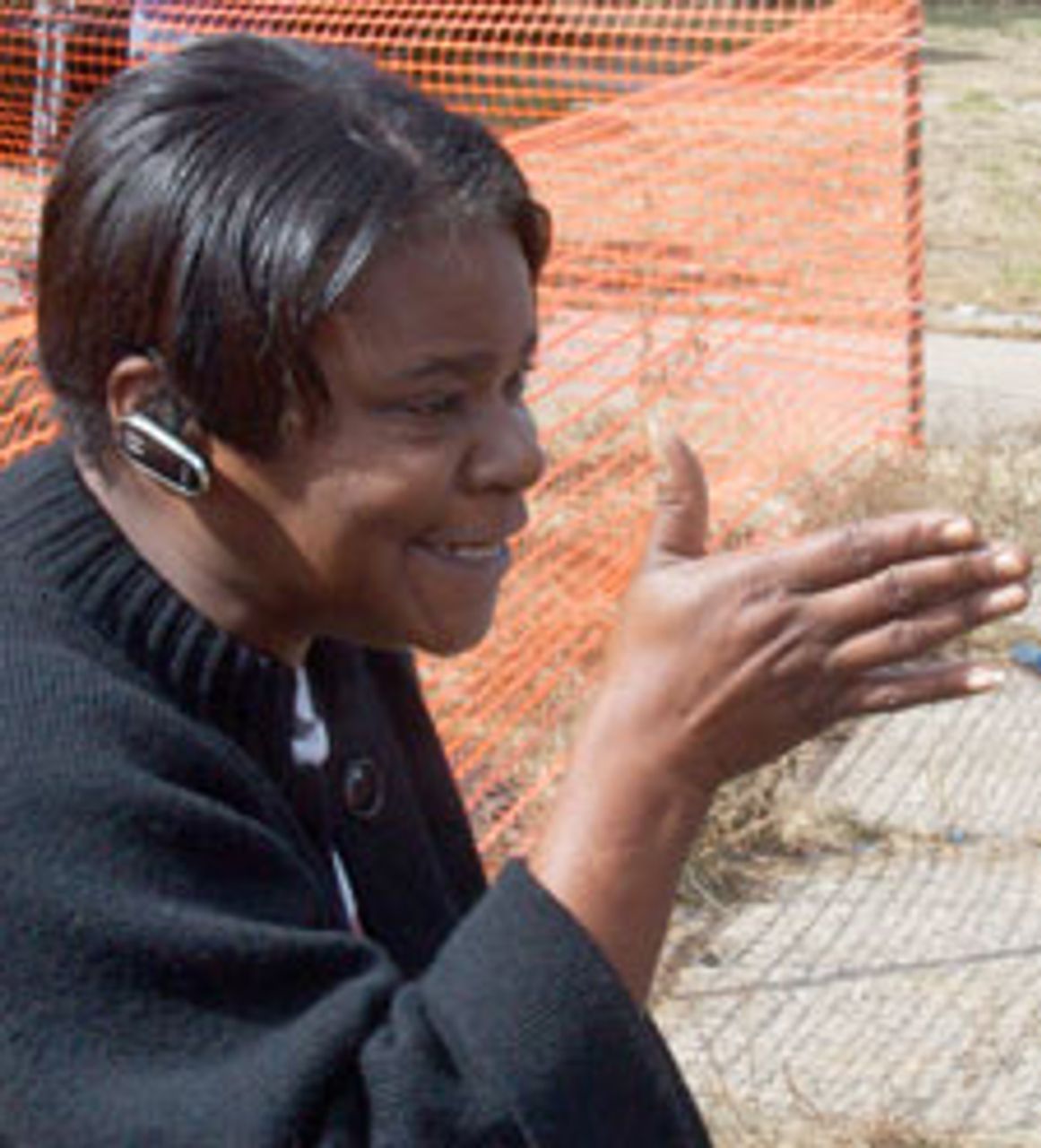 Valeria McKinstry
Valeria McKinstryValeria McKinstry said residents of her block on East Robinwood Street, which was devastated by the fires, had been trying for ten years to get DTE to make improvements to the power lines. “We have called DTE on many occasions to ask them to address the problems of lost power, and we get no results,” she said. “In the week before the fire, there were repeated power outages, power surges. When I called DTE, they didn’t come, they wouldn’t come.”
“If DTE had responded when the community called about the loss of power, this wouldn’t have happened,” she said. “For over 10 years we have been trying to prevent this from happening. And DTE’s response is to tell us to stop calling, or to say it is not their responsibility.”
East side resident James Jordan told WSWS reporters that residents in his neighborhood had contacted DTE about a malfunctioning transformer weeks earlier. “Three weeks ago there was an outage when all of the power failed,” he said. DTE only “patched it up” he added. “The fire inspector said it started at the pole. The transformer fell because they [DTE Energy] didn’t fix it.”
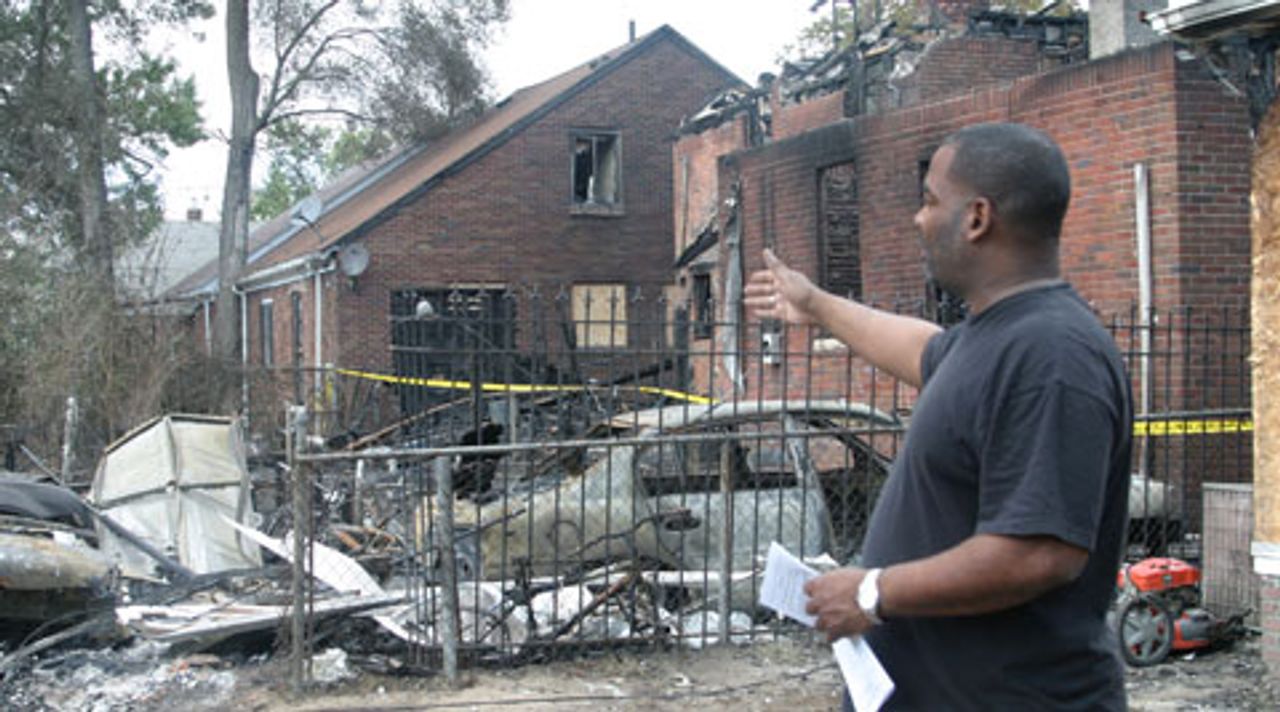 James Jordan points to the devastation in his neighborhood
James Jordan points to the devastation in his neighborhoodJordan said that the dangers were well-known. “The moment the wind blows you see the lights going off and on,” he said. “I can tell you from the amount of money we pay for utilities, this should be the least of our problems.”
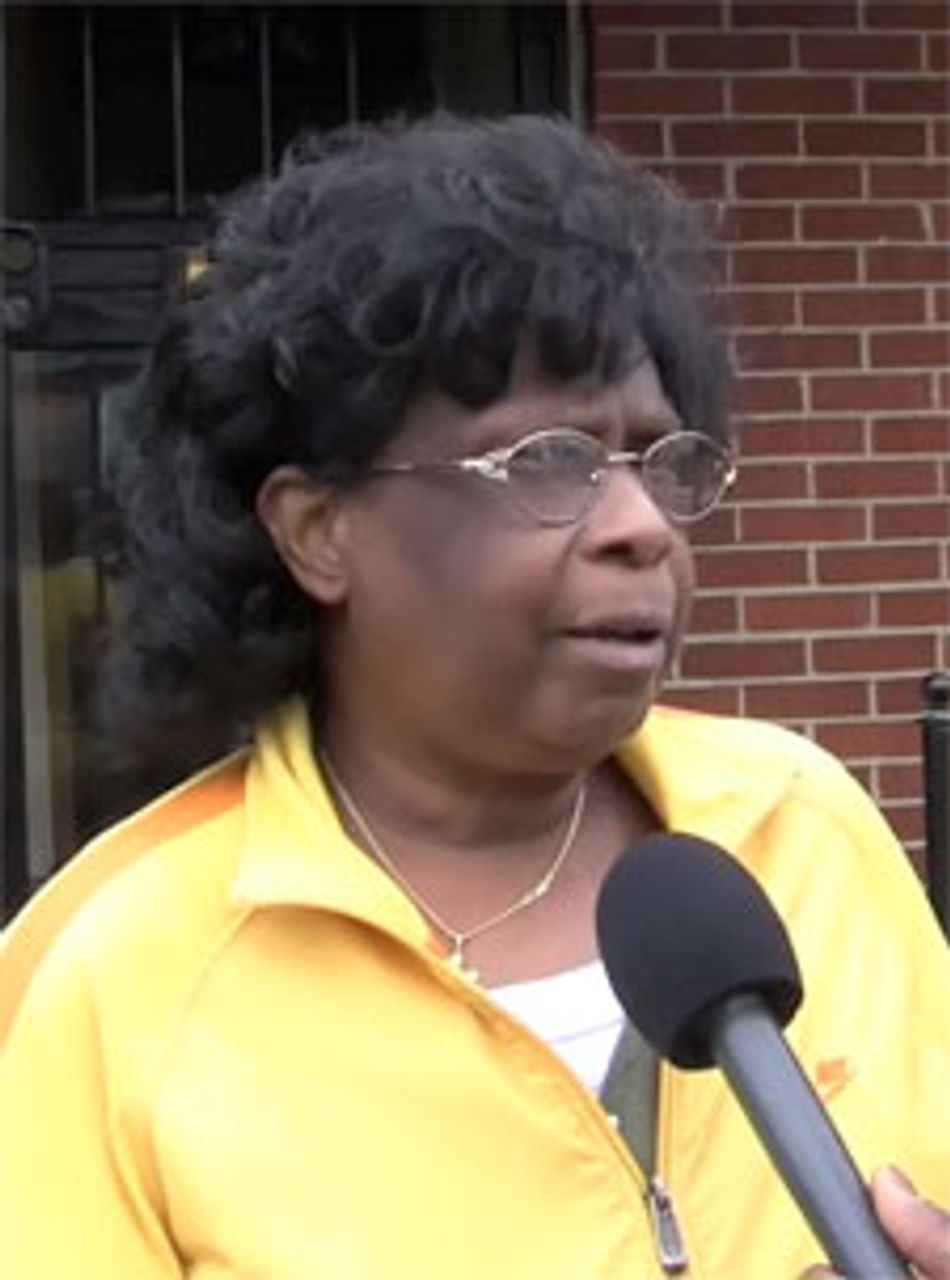 Shirley Hargrave
Shirley HargraveOn Friday, September 3, east side resident Shirley Hargrave appealed to DTE several times to come to the neighborhood to investigate power surges, flickering lights and humming sounds. DTE representatives told Hargrave that if she continued to call, she would be levied with a service charge. She was also advised to call 911 if a fire should start.
Michelle Denton of Robinwood Street also reported calling DTE the week prior to the fire to report flickering lights.
DTE claims it responded to these complaints and made repairs in the hours before the fire, but it offered few details. In fact, such problems with electricity are daily occurrences in Detroit.
“A lot of people saw this coming,” a homeowner in the Evergreen/Six Mile area told the WSWS. “I personally asked DTE to trim trees that were hanging over power lines, and they said they don’t do that anymore.”
Another resident of East Robinwood Street, Kevin McDowell, confirmed that DTE had abandoned upkeep. “They told us it was our responsibility to cut trees around the wire,” he told the WSWS. “They would only cut a few branches that are close to the tree, but a year later it grows back.”
From minor fires to conflagrations
The woeful state of the electrical grid, it is clear, played the paramount role in starting the fires. But the fires quickly exposed the inadequacy of Detroit’s fire protection, which has been the victim of repeated budget cutbacks over the past three decades. In the past six years alone, the DFD workforce has been reduced from 1,300 to fewer than 500.
On Tuesday, September 7, emergency calls started coming in at 3 pm reporting spreading fires. “[M]ultiple fires were burning out of control in nearly every corner of the city,” the Detroit Free Press noted. “Plumes of black smoke dotted the sky as far as the eye could see.” At that moment, Detroit Mayor Dave Bing was at a screening of the TV police drama “Detroit 1-8-7.”
By nearly all accounts, the response was compromised by budget cutbacks to fire protection in the city. Every day between eight and twelve of the city’s companies are deactivated to save money. On September 7, eight units were idled. The rolling “brown outs” exacerbated a chronic manpower shortage. According to Detroit Fire Fighters Association President Daniel McNamara, the department would need as many as 300 additional firefighters to adequately protect the population.
Fire Commissioner James Mack says 58 of the city’s 66 fire companies—236 firefighters in all—responded to 85 burning structures and 62 downed lines over a four hour period. Thus the ratio of available firefighters for every blaze and downed wire was 1.6 to 1. Given these staffing levels, it must be conceded, the efforts of Detroit firefighters were heroic.
Mack confirmed that the fire department’s ability to respond to the fires was compromised by its need to prioritize the use of its limited resources. “Everyone knows we are under budget constraints, so with those budget constraints we are maximizing the equipment we have and the manpower that we have,” he said. For the first time since the riots of 1967, firefighters from Detroit suburbs were called in to assist with the blazes.
The WSWS and a number of local media outlets heard from numerous residents that they attempted to call the DFD when the fires were still small. In some cases it took hours for the overburdened department to respond, making what might have been small, controllable fires, much larger.
Sharon Kelso told the Detroit News that she called 911 numerous times to report a small fire in the alley behind her northwest Detroit home. Kelso also drove to a fire station, only to find it empty. By the time firefighters responded, the fire had consumed several homes. “It didn’t have to be like this,” Kelso said.
James Johnson, who lives on the corner of Stoepel Ave. and Margareta Ave., lost everything, including his cars, in the fire. “I have a fire station right here less than 1,500 feet from my house, but nobody was there,” he told the Free Press. “They were out fighting fires all day.”
Ian Perrotta, who lives near fires that hit the 13200 block of Moenart St., said it took almost two hours for firefighters to arrive. “It shouldn’t have taken that long,” Perrotta said. “If they got here in 20 or 30 minutes, all these fires might not have happened.”
Larry Hinton, a neighbor of Perrotta, lost his garage and was fortunate not to lose his house. “I think it could have been contained if the response time wasn’t so outrageous,” he told the Free Press.
The collapse of the city’s infrastructure also hindered the DFD’s response. In one instance firefighters battling a blaze on Robinwood St., which ultimately consumed 21 structures, were hampered by low water pressure from a fire hydrant.
When the smoke had settled, dozens of homes were destroyed and at least as many people were made homeless. The Southeastern Michigan Red Cross reported providing emergency shelter to nine families and food and clothing to about 40 people.
Among those made homeless were Louvenia Wallace and her three children. The apartment above hers in a house on 7 Mile Rd. and Van Dyke St. burned; in spite of this she was advised to remain in her apartment. Her children could not sleep from the smell of smoke—one daughter is asthmatic—so she spent the night after the fire at the house of a friend. She told the Free Press she did not know if she would move back to the partially destroyed house. “I don’t have the money to just move,” said the 31 year-old hair stylist.
The scope of the damage
While fires occurred throughout the city, major firestorms occurred in four locations.
Two city blocks to the east of the major thoroughfare Van Dyke St. between Hollywood St. on the north and Quinn Ave. on the south and encompassing Robinwood, suffered extensive damage. Thirteen homes were completely destroyed, nine others were damaged, and a number of other homes lost garages.
About one dozen homes were damaged on the east side, on the city block outlined by Lernoult St. on the north, Murray St. on the south, and McLellan St. and Cooper St. on the west and the east. Three homes were completely destroyed. Downed power lines were found in the alleyway.
Also on the east side, four houses and nine garages were damaged or destroyed on the city block next to Jane Playfield between Bloom St. and Moenart St.
On the west side, fire swept through the entire southern end of the city block outlined by Clarita Ave. in the north, Santa Rosa Ave. and Stoepel Ave. on the west and the east, and Margareta Ave. on the south. Ten homes were burnt, one after the other, on either side of the block, eight of them suffering major damage.
The aftermath
The response of DTE, the media, and city and state politicians to the disaster expresses their contempt for the population. Instead of mobilizing resources for those who lost their homes and investigating the root causes of the fires, the political and corporate elite immediately seized on the disaster to further their own reactionary aims at the expense of the people of Detroit.
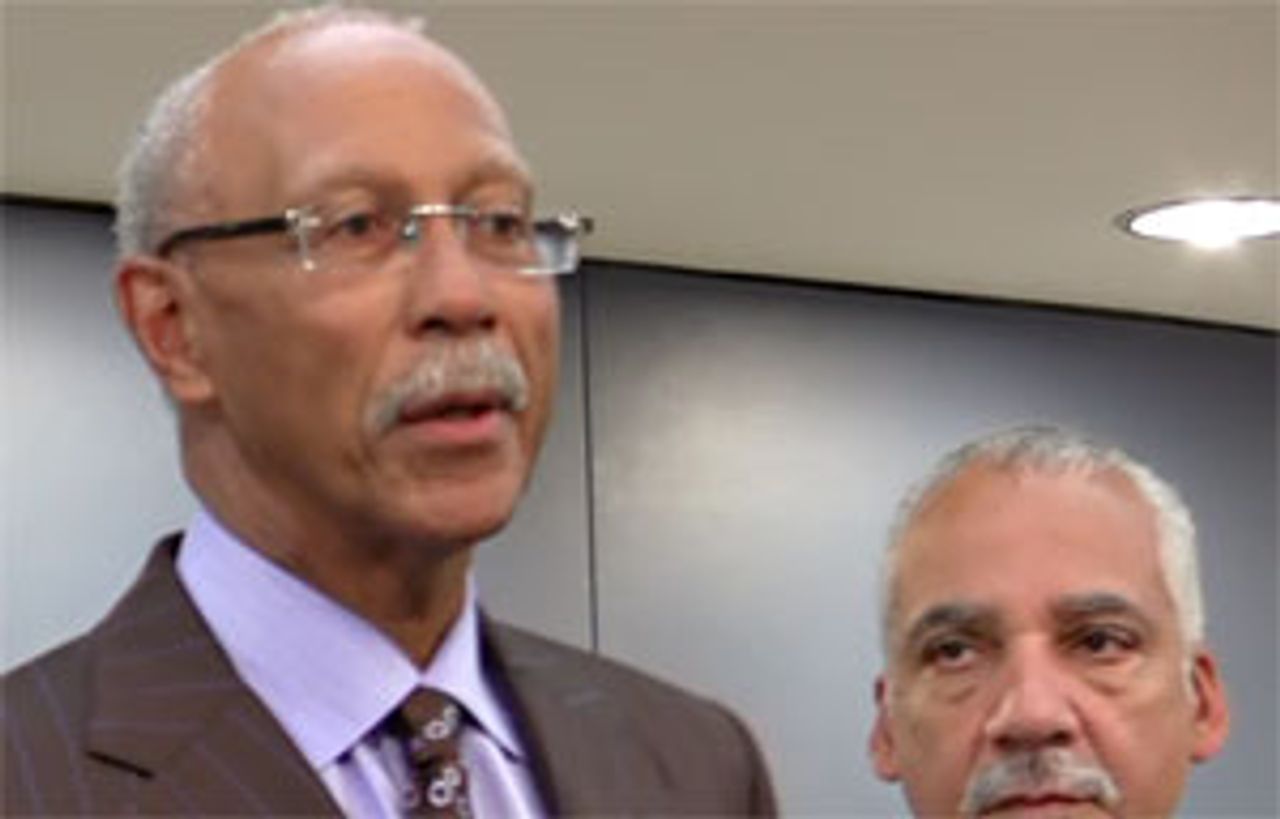 Detroit Mayor David Bing and Deputy Mayor Saul
Detroit Mayor David Bing and Deputy Mayor Saul Green at a press conference the day after the fires
In spite of the overwhelming evidence that the disrepair of the power grid ignited most, if not all, of the blazes, DTE has issued no apology and admitted no culpability. Instead, it has insinuated that “illegal hook-ups” are to blame. (Thousands of Detroit households are forced to tap into power lines due to DTE’s exorbitant rates and mass joblessness in the city.)
This campaign was picked up by the local media. “[I]t is quite possible that the fires were made worse by faulty and illegal electrical hookups,” the Detroit News speculated on September 12, before listing a few other factors, including “downed and arcing wires” and “arson.”
The Free Press also defended DTE, noting the multi-billion dollar energy concern “faces a lot of challenges in Detroit—record numbers of delinquent accounts, vandalism associated with copper theft, and a growing number of desperate residents hacking into power lines illegally,” before acknowledging that the company “must be held accountable” if it refused to respond to safety complaints.
On Wednesday September 8, one day after the disaster, Mayor Bing proceeded with a meeting of the city council to pursue his agenda of shrinking Detroit by removing the population from entire sections of the city. This plan, Bing has repeatedly stated, aims to save money for the city—and, not incidentally, DTE—on the cost of providing services.
The fires’ destruction, in fact, coincides with the relocation plans. While Bing stated that the city would not “take the position of forcing people from their homes,” he pointedly added, “I can't tell you that anything’s off the table.” City Council President Pro Tem Gary Brown bluntly declared, “This is going to come down to me to one basic issue … identify the winners and the losers,” he said. “Some neighborhoods are not going to be viable, and we are going to find ways to give incentives to move people out.”
Bing and city officials have carried on a series of “public meetings” that they present as venues for democratic discussion on the relocation plans. In fact, the meetings have been organized in such a way as to bar any discussion of the fires and the conditions that led to them—which continue to endanger the lives of city residents. (See “Officials seek to prevent discussion at meetings on downsizing of Detroit”).
On September 9, Bing held a press conference in which he absurdly presented the destruction caused by decrepit power lines and cutbacks to the city’s fire department as an unforeseeable “natural disaster.” The Free Press repeated the assertion, calling the disaster a “freak of nature” and “an oddball occurrence that … won’t likely be repeated.”
Without offering any evidence, the mayor dismissed the possibility that budget cutbacks to the fire department might have had anything to do with the disaster. “There are a lot of people who are naysayers who say, ‘You don’t have enough equipment; you don’t have enough people,’” Bing said. “But with a natural disaster … I don’t think you can appropriately plan for that.”
When a WSWS reporter asked Bing whether or not he would be qualified to hold DTE accountable, given his longstanding membership on the energy giant’s corporate board, the mayor erupted in hysterics.
“Don’t ask me about qualifications right now,” Bing yelled. “We’re dealing with something with folks’ lives.” Bing sat on the company’s board of directors from 1985 until 2005, and his inaugural committee was chaired by DTE’s multi-millionaire CEO, Anthony Earley.
The same day, September 9, D’Artagnan Collier, a member of the Committee Against Utility Shutoffs and the Socialist Equality Party (SEP) candidate for Michigan’s state legislature, 9th District, issued a statement condemning the role of the city government and DTE in the disaster.
“Decades of budget-cutting have starved essential city services, such as fire protection, of needed funds,” Collier stated. “At the same time, DTE has neglected the upkeep of basic electrical infrastructure, focusing instead on raising utility rates and ruthlessly cutting people off from gas and electricity.”
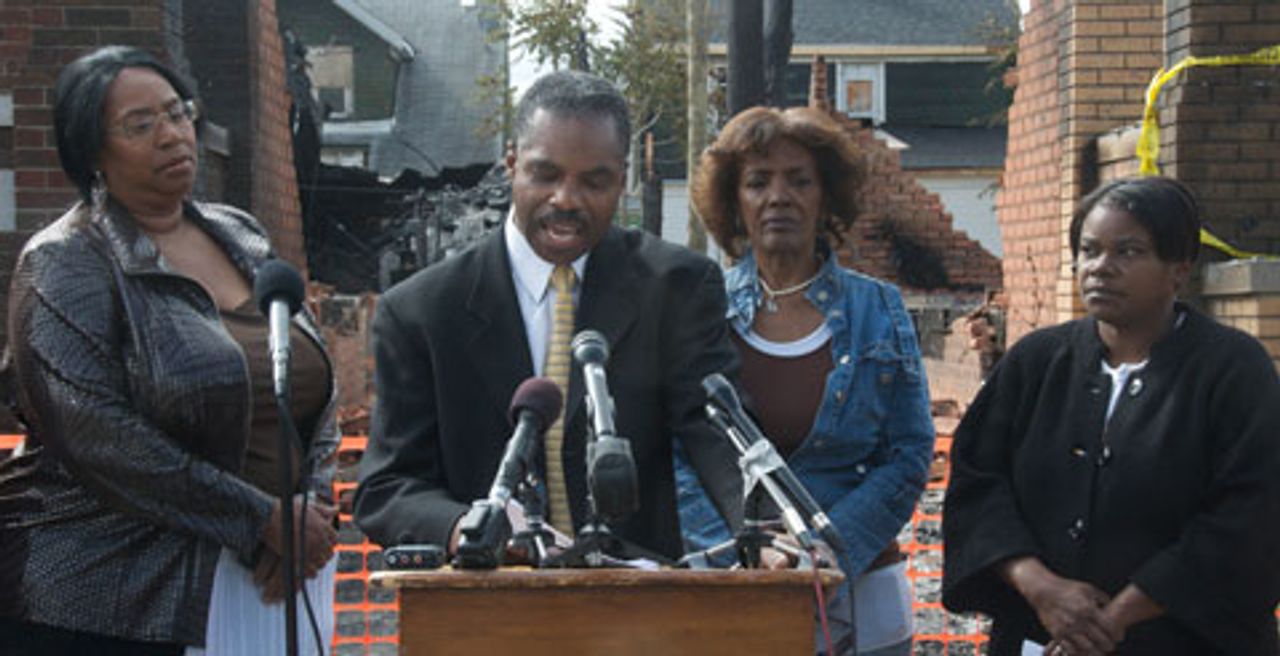 The CAUS press conference on September 10
The CAUS press conference on September 10On September 10, CAUS held a press conference attended by Collier, Lawrence Porter, and local residents. The event was broadly reported by local broadcast and print media. CAUS and the SEP rejected the claim that the fires were a “natural disaster” and condemned the role of the city government and DTE. Porter and Collier called for an independent investigation of the fires and the transformation of DTE into a publicly owned enterprise, which would provide utilities to all as a basic social right.
The city responded to the outpouring of popular outrage, as well as the intervention by CAUS, by seeking to defend DTE. Indeed, already by Friday, September 10, DTE and city officials were openly coordinating their response. Deputy Mayor Saul Green said the meeting held that day with DTE was to “make sure we have all the right people in the room.” Not included among the “right people” were the victims of the fires. The purpose of the meeting was to develop a common strategy to deflect popular anger, Green indicated. “It doesn’t make sense to start pointing fingers and trying to cast blame,” he said.
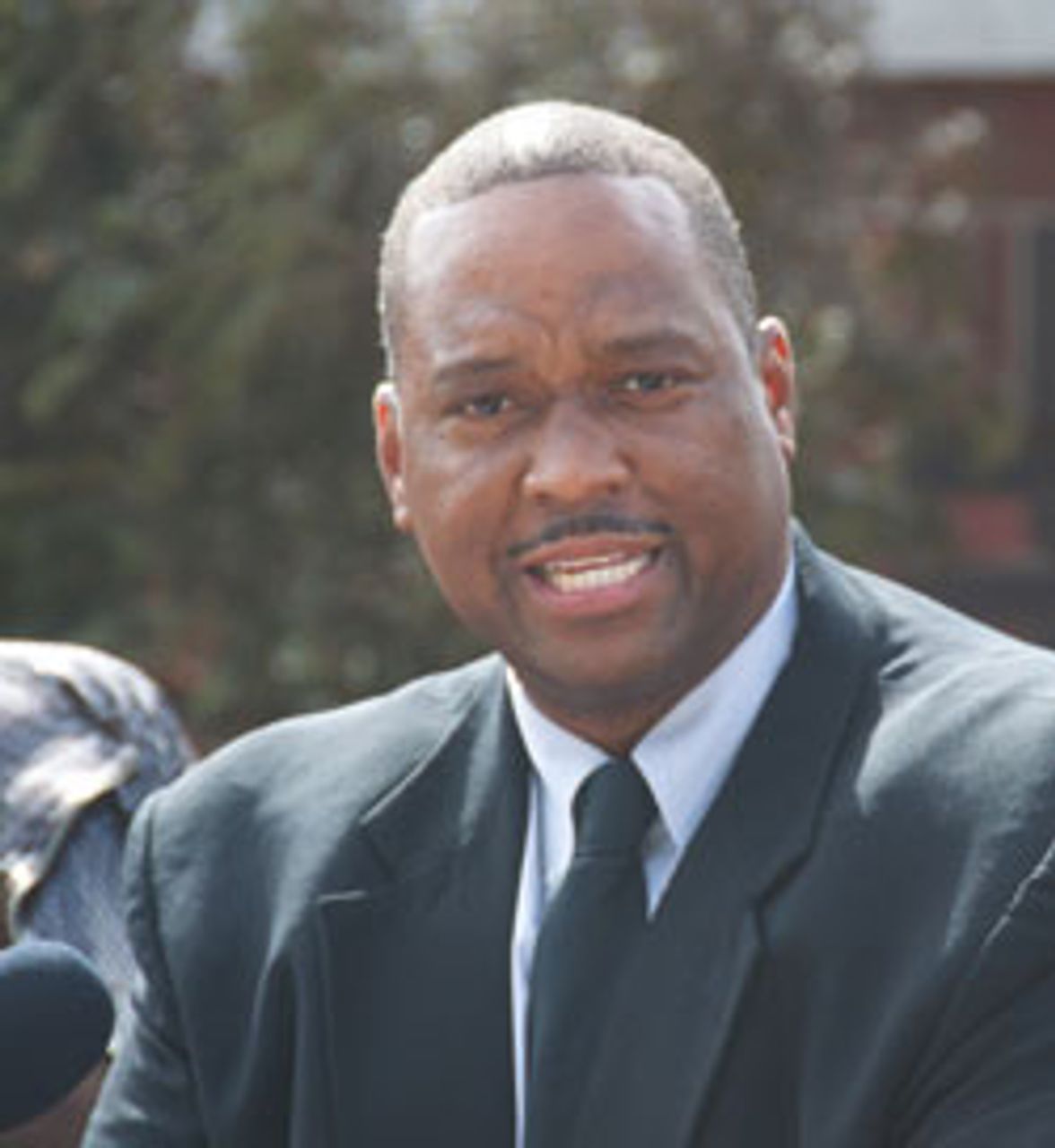 SEP candidate addresses the CAUS press
SEP candidate addresses the CAUS press conference
The city and the Michigan Public Services Commission (MPSC) have belatedly declared that they will carry out investigations into the disaster, with both scheduling public hearings for September 29. These hearings can only be whitewashes, held as they are by officials who are entirely complicit in the conditions that created the disaster. Both the city and the MPSC function as little more than subsidiaries of DTE, approving and enforcing its shutoff policies and neglect of the electricity infrastructure.
